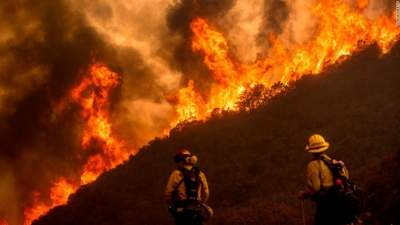
A heatwave is a period of prolonged abnormally high surface temperatures relative to those normally expected. Classifying a heatwave varies from country to country. The World Meteorological Organisation (WMO) defines heatwaves as fire or more consecutive days during which the daily maximum temperature surpasses the average maximum temperature by 5 or more.
- California’s climate: Wildfires are a natural part of its landscape. California has two distinct fire seasons – one that runs from June through September and another from October through April. While the first one is driven by a combination of warmer and drier weather, the second one is driven by dry winds such as the Santa Ana and Diablo, which make wildfires spread rapidly and cover large areas.
- Longer fire season: In the recent past, the fire season in California has been starting earlier and ending later. The length of the season is estimated to have increased by 75 days.
- Beetle infestation: Prolonged drought conditions leave behind a landscape of dead trees, which lead to infestation by bark-eating pets such as the mountain pine beetle. Outbreaks of pests weaken and kill trees. Beetle-killed trees are at a higher risk of fire.
- Warmer weather: Heatwave is a major contributor to forest fires in California. Did you know the Death Valley recorded sweltering 130 degrees Fahrenheit last month? It was the hottest temperature recorded in the world since 1913.
What is the link between climate change and forest fires?
- Climate change has created conditions conductive to forest fires. Long summer, drought, and dry air and vegetation make forests more susceptible to severe wildfire.
- Climate change has led to frequent heatwaves across the globe. Hotter temperatures, again, mean parched land.
- Climate change has also lengthened the fire season in many parts of the world.
Picture Credit : Google

